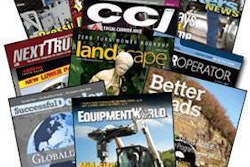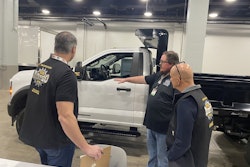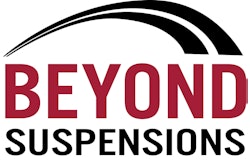By Stu MacKay, MacKay & Company
First, some administrative details. Thanks to CVSN for a well-crafted and clearly expressed position paper on their perspective of and objectives for the role of their organization and its members in the future heavy-duty aftermarket.
And to Lyle Bass, for an equally well thought out personal perspective on the many advantages offered by, and opportunities available to, aggressive and focused heavy-duty distributors. Lyle, I would only add that truck dealers are no more excited about having to sell at national fleet prices than are independent distributors. But we will probably only see more of this in the future.
Now, back to the current business at hand.
What in the world is the 289/327 market – and what the hell does it have to do with the heavy-duty aftermarket? Nothing – and everything! Perhaps an explanation is in order.
In the 1960s, when the independent heavy-duty aftermarket truly came into its own, it represented the first clear delineation between the automotive (light-duty) and the heavy-duty aftermarket. These were the founding days of CFS, ASIA Heavy Duty and similar groups. Not that the truck parts business was illegitimate prior to the ‘60s – but the market was clearly overshadowed by the car parts business. By the mid-60s, the aftermarket supporting the operating truck universe was starting to get big enough for validation and recognition.
The heavy-duty aftermarket was much more straightforward
A scan of truck specification information from the mid- to late-60s provides a good picture of what the truck universe – and as a result the truck aftermarket – looked like then:
Fourteen companies were producing Class 8 trucks and 12 manufactured medium duties.
In the Class 8 arena, up front of the clutch, it was Detroits in GMCs and Chevys, Mack in Macks and Cummins just about everywhere else.
From the flywheel back, aside from Mack, it was Spicer clutches, Fuller transmissions, Spicer drivelines and either Eaton or Rockwell rears, Bendix air pumps and Bendix or Rockwell brakes.
Mack was Mack from bow to stern; brakes, however, were vendor-supplied.
The heavy-duty aftermarket was a much more straightforward program then:
Three or four filters for each of three engine families gave 90 percent coverage.
Spicer and Rockwell parts pretty well covered the driveline aftermarket; Eaton’s distribution policy (OE) made these parts a bit more of a challenge for independents – but manageable.
If there was a brake part that wasn’t available to the independent aftermarket, it probably wasn’t worth worrying about.
So what’s the importance of the 289/327 issue?
Just this: In the late 1960s, Ford (289s) and Chevrolet (327s) alone represented nearly 42 percent of new registrations; corporately, GM and Ford together accounted for 70 percent. (Just for the record, imports accounted for less than 10 percent – and nearly 60 percent of these were VWs.) In this environment, the independent automotive aftermarket flourished. A relative handful of brands – many with common components – covered the bulk of the automotive aftermarket. A big, straightforward aftermarket opportunity.
And that’s just what the heavy-duty aftermarket was 40 or so years ago, a growing (not yet big), straightforward aftermarket opportunity. There were maybe 800,000 Class 8 trucks on the roads and approximately 1.4 million medium-duty rigs. Seventy-five percent of the Class 8s were diesel; 90-plus percent of the mediums were still gas. Universes of common components were large – and needed frequent repair and replacement. A steady diet of Spicer 14 inch 2-plates, Fuller RTOs and Rockwell SQHDs fed the aftermarket – and quite handsomely.
But, just like today’s automotive aftermarket, today’s heavy-duty aftermarket is not only much larger – it is much more complex.
Suppliers have consolidated; many have disappeared. It’s the same with customers. Consolidation has been rampant in virtually every vocational category (for-hire, refuse, school bus, private fleets and lease/rental for starters). Local, individually owned businesses are certainly important – but every acquisition and/or consolidation shrinks that market.
And the 289/327 phenomenon? Long gone in the automotive market – and going that way in the heavy-duty market as well. Today, it’s a growing universe of Daimler, Volvo, MaxxForce and soon-to-be MX engines. A variety of Allisons have replaced manuals and clutches, braking systems are as much electronics as air and friction material. The Class 8 universe may be three times its late ‘60s size – but it is infinitely more fragmented.
One last thought. In the ‘60s, Mack, White and International controlled nearly 60 percent of the Class 8 market. These three had an estimated 200 to 250 factory branches. So did Fruehauf and Trailmobile, each with 80 or more. Could there have been any easier pickings for independents?
The opportunities are still here – but they are very, very different from just a few decades ago. Adios, 289/327; never to be seen again!
Stu MacKay has headed MacKay & Company since its inception in 1968. MacKay & Company serves manufacturers and distribution organizations serving the vehicle, equipment and engine businesses. The company provides its clients with proprietary research and consulting, participation in multi-client studies and its DataMac aftermarket tracking services.
The views expressed in the Guest Editorial are those of the author and do not necessarily reflect the opinions, beliefs and viewpoints of Truck Parts & Service magazine.









